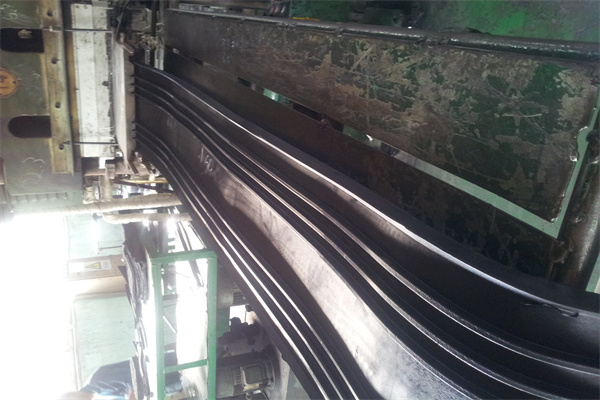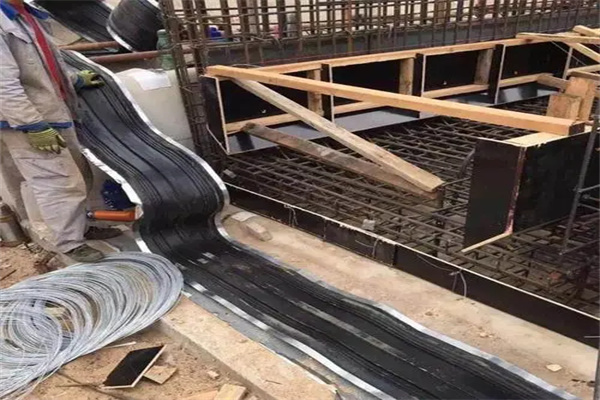Rubber waterstop is mainly made of natural rubber NR, styrene butadiene rubber(SBR), chloroprene rubber CR as the main raw materials, mixed with various additives and fillers, and molded through plastic refining, mixing, and compression. There are many varieties and specifications of waterstop products, including bridge type, mountain type, P type, R type, U type, Z type, B type, D type, H type, E type, Q type, etc
The specific precautions for rubber waterstop are as follows:
Rubber waterstops have good elasticity, wear resistance, aging resistance, and fracture resistance. They have strong adaptability to deformation and good waterproof performance. The temperature range for use is -40 ℃ -+60 ℃. When the temperature exceeds 70 ℃,it is should not be used. This product is suitable for waterproofing deformation joints in underground structures, dams, water storage tanks, swimming pools, roofs, and other building materials and structures. When users install waterstop products partially or completely embedded in concrete during the pouring process, if there are many sharp stones and steel bar heads in the concrete, the tear strength of plastic and rubber is 3-5 times lower than the tensile strength. Once the waterstop is punctured or torn, the crack will expand without significant external force. Therefore, in the positioning and pouring process of the waterstop and concrete, attention should be paid to the positioning method and pouring pressure to prevent the waterstop from being punctured. Therefore, in the positioning and pouring process of the rubber waterstop and concrete, attention should be paid to the positioning method and pouring pressure to avoid being punctured and affecting the waterstop effect.

Rubber waterstops can be widely used in various types of concrete structures, such as water retaining dams, reservoirs, subways, culverts, tunnels, and other underground engineering. In some construction projects, due to the inability to continuously cast, deformation of the foundation, or thermal expansion and contraction of concrete components caused by temperature changes, deformation joints and construction joints are often left during casting. The anti leakage problem of these joints must be solved by using rubber waterstops at the deformation joints. It can prevent groundwater or external water from leaking into the building structure, as well as prevent water inside the building from leaking to the outside.
At present, for some larger high-rise or bridge projects, due to the inability to continuously pour, deformation of the foundation, or thermal expansion and contraction of concrete components caused by temperature changes, construction joints, settlement joints, and deformation joints are needed to be reserved. Rubber waterstops must be installed at these joints to prevent water leakage problems. Waterstops are mainly used in foundation engineering where they are integrated with concrete structures, such as underground facilities, tunnel culverts, water conveyance aqueducts, water retaining dams, and liquid storage structures, and are installed in construction joints and deformation joints during cast-in-place concrete. The function and principle of rubber waterstop is that it is a waterstop structure product made by utilizing the high elastic deformation characteristics of rubber materials under stress. Rubber waterstops are widely used for waterproofing deformation joints in water conservancy, hydropower, dam culverts, tunnels, subways, civil defense works, basements of high-rise buildings, and parking lots. Rubber waterstop is pre embedded in the deformation joint and integrated with the concrete during pouring, which can effectively prevent water seepage and leakage at the deformation joint of the structure, and play a role in shock absorption and buffering, thereby ensuring the waterproof requirements of the engineering structure.
Installation of rubber waterstops
1. Construction sequence of rubber waterstop
Snap line for design joint positioning → half positioning reinforcement and formwork → rubber waterstop installation (use transparent tape to seal the rubber waterstop expansion strip) → (remove the transparent tape in the concrete pouring area before pouring concrete) Pour half width concrete → remove the deformation joint formwork → paste the deformation joint polyethylene foam board for caulking → (remove the transparent tape in the concrete pouring area before pouring concrete) Pour the other half of block concrete → repair the deformation joint and caulk the sealant → end of deformation joint construction.

2. Rubber waterstop construction method( steel plate rubber waterstop)
1) Design seam positioning and snap line construction: The middle gap of the construction seam is 30mm. First, pop out the center position of each deformation seam on the bottom cushion layer
Place and move 15mm outward on both sides as the construction control line. During construction, use a plumb bob to control the distance between the "upper S1" and "lower S2" of the waterstop, and ensure that the width L1 and L2 relative to the edge of the waterstop are equal
(2) Construction of half width positioning steel bars and lower formwork: The formwork at the deformation joint is supported by 18mm thick bamboo plywood. According to the construction control line, the bottom of the formwork is firmly fixed with positioning steel bars, and one positioning steel bar is set every meter. The upper part is reinforced with 50mm thick square timber and the width of the deformation joint is located. Use iron wire to connect the inner template of the deformation joint with the fixed steel bars. After the positioning is completed, a diagonal support shall be set every one meter at the 50 × 100mm square timber position to prevent the formwork from shifting or deforming during the concrete pouring process.
(3) The steel plate chloroprene rubber waterstop is sealed with transparent tape in the material stacking area to prevent the expansion strip from moving up and down. During construction, it is inserted into the groove in the middle of the positioning steel bar to prevent the waterstop from moving up and down. At the same time, a 15mm × 40mm square wood is embedded in the groove of the waterstop, and the square wood is tightened to form a whole with the formwork support system to prevent the steel plate chloroprene waterstop from moving left and right, ensuring that the waterstop is in the correct and firm position without damaging the waterstop. After the waterstop is fixed, a 50mm thick square wood is used to connect the upper and lower fixed waterstop square waterstops into a whole.
(4) Demolition of deformation joint formwork construction: When the concrete strength meets the requirements for formwork removal, the formwork at the deformation joint can be removed. To remove the formwork at the deformation joint, the wooden support should be removed first, and then the bamboo plywood formwork should be removed. The bamboo plywood formwork should be removed from the corner of the bottom plate deformation joint first, and the formwork above the waterstop should be removed first, followed by the formwork below the waterstop. The lower formwork should be pried open along the direction of the deformation joint and laterally along the formwork. During the process of dismantling the template, it is strictly prohibited to touch the waterstop with hard objects, and it is strictly forbidden to use the waterstop as a fulcrum for crowbar force. Proper protection measures should be taken for the exposed part of the waterstop.